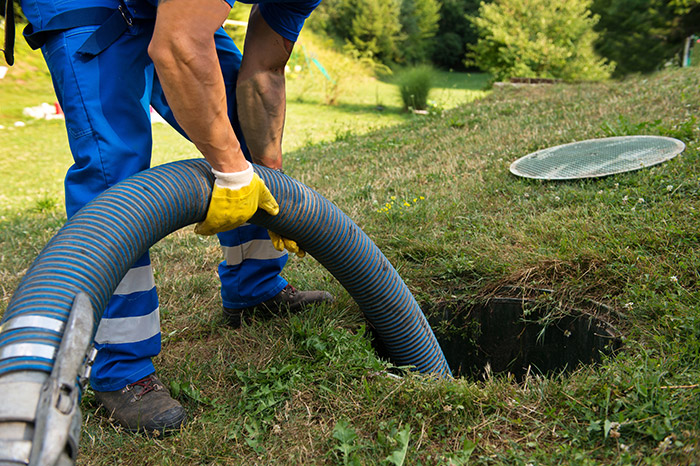
Did you know that it costs anywhere from $3,000 to $7,000 to replace the septic tank? With this in mind, proper septic system maintenance is absolutely essential to keeping your septic system up-and-running. Routine septic system maintenance will not only save you from spending big bucks on expensive repairs, but it will also help make your living environment a healthy and safe space. Fortunately, septic system maintenance isn’t rocket science. From your toilet and shower to your garbage disposal and washer, whatever goes down your drain ends up in your septic tank. Therefore, it’s important to pay close attention to what items you are putting down the drain, as well as the efficiency of your appliances. For more information on how to maintain your septic system, read our guide below.
Septic System Basics
Your septic system contains a septic tank and a drainfield. The septic tank container is located underground and is responsible for holding solids and scum accumulated from your wastewater. According to the EPA (Environmental Protection Agency), “more than one in five households in the United States depend on an individual onsite system or small community cluster system to treat their wastewater.” Households that use a septic tank system are typically located in rural areas without access to public city sewers. While potential home buyers may initially view having a septic tank as a negative, they should know that with proper maintenance, these septic tanks have the ability to last 30 years or more.
What is a drainfield?
Once wastewater exits the septic tank, it passes on to the drainfield. Part of the septic system, the drainfield is a “shallow, covered, excavation” in the soil, according to the EPA. It is sometimes referred to as a “leachfield.” If the drainfield becomes inundated with wastewater and/or outside liquid, it can flood. This can lead to a sewage backup.
Why is septic system maintenance so important?
Given how expensive it is to replace a septic system, proper maintenance is an important step to keeping your septic system (and your finances) healthy. The more proactive you are in caring for and maintaining your septic system, the longer that septic system will last. When maintaining your septic tank, the goal is to prevent the accumulation of solids, as well as any groundwater contamination.
How often should I have my septic system pumped?
The size of your household, total wastewater generated, amount of solids present and tank size will all determine how often your septic system will need to be pumped. The EPA reports that while the average septic system is pumped every three years, those with “electrical float switches, pumps or mechanical components should be inspected more often.” In general, we recommend having your septic system inspected and pumped once a year to be safe. Below is an easy four-step maintenance program, which, if followed carefully, will prevent solid build-up and ensure that your system will operate at peak efficiency for many years to come.
4 Steps to Septic System Maintenance
- Step 1 – Responsible Pumping – Each household should be on a regular septic service schedule to prevent the accumulation of solids in their system. Servicing frequency varies per household, so be sure to ask your technician their opinion on how often your septic system needs to be pumped.
- Step 2 – High-Pressure Water Jetting – All septic systems, regardless of responsible pumping, will accumulate solids and other debris in their drain pipes. The presence of these solids clog the pipes that connect the septic tank to the drainfield. Therefore, we recommend high-pressure water jetting every five years to eliminate and clear any debris that could prevent your system from operating efficiently.
- Step 3 – Use a Bacteria Additive – Septic owners should use a live organic bacteria that breaks down the presence of unnatural substances and solids, like detergents and soaps, that sometimes enter your septic system. If these common household substances penetrate your septic system they kill off the naturally occurring bacteria that allow your system to function properly. Bacteria additives are an inexpensive insurance policy that keeps your pipes clean & clear, odor free, and your system functioning properly.
- Step 4 – Install an Effluent Filter – Your filter, which prevents solids from entering into your drainfield, needs to be cleaned or replaced whenever you service your system. Some older systems do not have a filter. If your septic system does not have a filter, inform your technician.
Contact Morse Engineering and Construction for more information.
